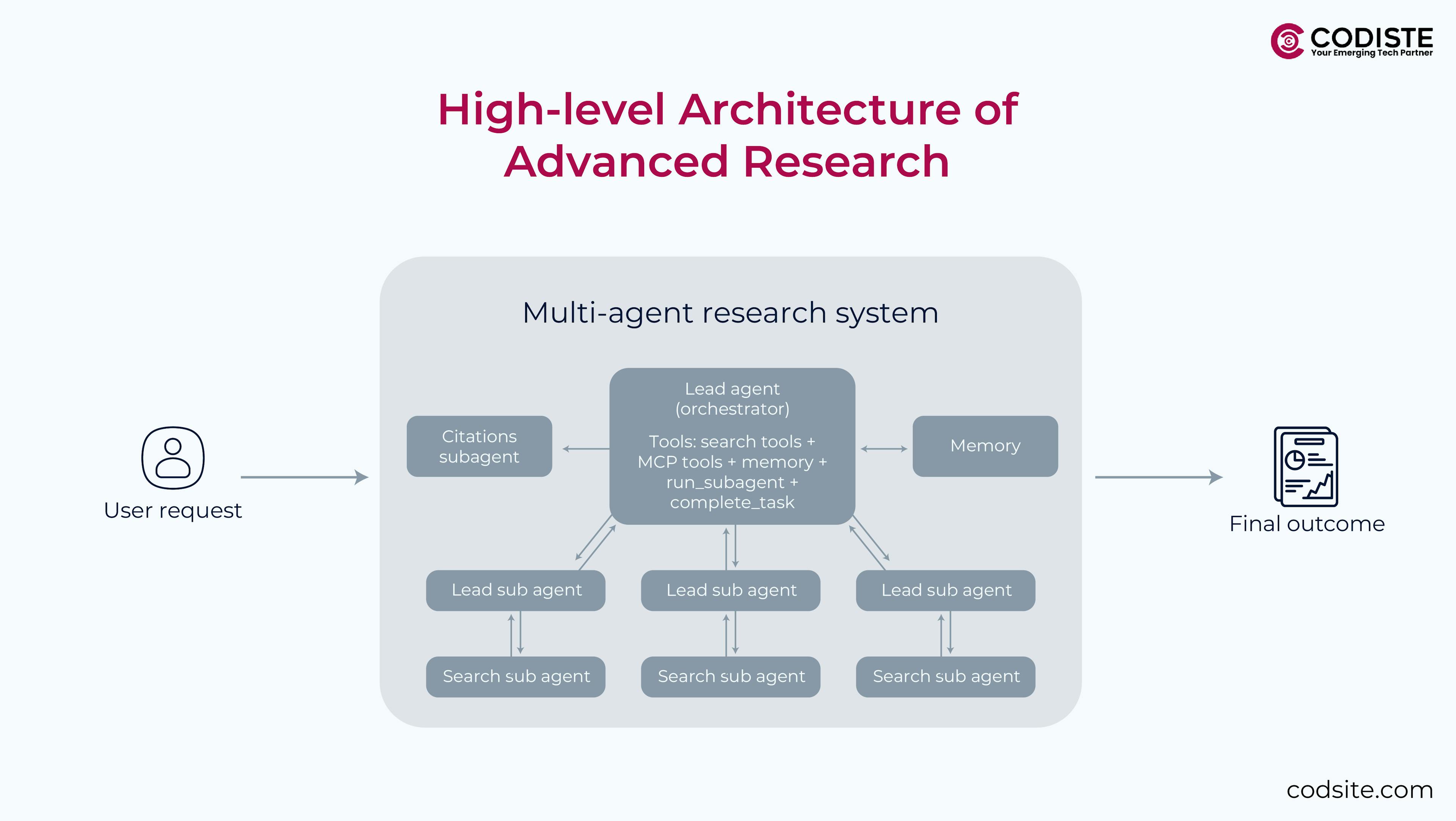
,
TL: DR
Model Context Protocol (MCP) transforms enterprise AI by solving the "stateless agent" problem where AI agents lose context between sessions, causing expensive re-computation, failed multi-step workflows, and scaling limitations.
Key Benefits:
- Eliminates memory fragmentation - agents retain context between sessions without costly re-loading
- Enables complex multi-step reasoning - maintains state throughout workflows via orchestration layers
- Provides enterprise-grade security - OAuth2, encryption, audit logging with standardized protocols
- Scales efficiently - distributed architecture with intelligent caching and specialized agent coordination
- Integrates seamlessly - connects to existing databases, APIs, and file systems through standardized interfaces
Technical Architecture:
- Context Servers: Manage data from files, databases, APIs
- MCP Clients: AI applications that consume context through standardized protocols
- Transport Layer: Secure communication with authentication & encryption
- Orchestration Layer: Master routing system that decides query distribution
- Specialized Agents: Domain-specific agents under orchestration for optimized processing
- Sub-Orchestration: Additional layers for high-complexity scenarios requiring multi-domain expertise
Implementation Approach:
- Pilot Phase - single use case validation
- Horizontal Scaling - multi-department rollout with orchestration
- Enterprise Deployment - full production with advanced orchestration features
MCP transforms unreliable, stateless AI agents into persistent, context-aware systems with intelligent orchestration that can handle enterprise-scale reasoning tasks while maintaining security and compliance standards. Organizations implementing MCP gain competitive advantages through more reliable AI operations and reduced operational overhead.
Introduction
There are too many disjointed solutions in the enterprise AI space. Product teams are having trouble implementing dependable multi-step reasoning systems at scale, ML engineers are patching memory systems with fragile workarounds, and CTOs are battling AI agents that forget past interactions.
Model Context Protocol (MCP) emerges as the architectural solution that transforms these challenges into competitive advantages. This standardized framework enables AI agents to maintain persistent memory in LLMs, execute complex reasoning chains, and operate securely in production environments, without the technical debt of custom implementations.
The Context Crisis in Enterprise AI Systems
One fundamental shortcoming of contemporary AI agents is that they function independently, approaching every contact as if it were a new one. Significant operational difficulties are brought about by this stateless strategy, which has an immediate effect on economic results.
When implementing AI solutions, enterprise organisations face five crucial pain points:
- Memory fragmentation: Between sessions, agents lose context, necessitating costly recalculation of previously calculated facts.
- Reasoning bottlenecks: When agents are unable to sustain an intermediate state, multi-step workflows fail.
- Security vulnerabilities: Ad-hoc context management in language models creates attack vectors and compliance risks
- Scaling limitations: Token limit in language models makes context solutions prohibitively expensive at enterprise scale
The root cause isn't the AI models themselves—it's the absence of a standardized AI model context protocol. MCP addresses this architectural gap by providing a unified framework for persistent, secure context handling.
Model Context Protocol Explained: The Technical Foundation
The MCP protocol operates as a client-server architecture that standardizes how Model Context Protocol works for AI agents to access, store, and manipulate contextual information. The protocol establishes a secure connection between AI models and external context sources via well-defined interfaces.
The core model context architecture consists of three primary components:
- Context Servers: Specialized services that manage specific types of contextual data (file systems, databases, APIs)
- MCP Clients: AI applications that consume context through standardized protocols
- Transport Layer: Secure communication channels that handle authentication, encryption, and data serialization
While guaranteeing enterprise-level security, scalability, and maintainability, this division of responsibilities allows AI agents to retain deep contextual awareness.
Orchestration Architecture: Managing Complex Multi-Agent Systems Modern enterprise AI deployments require sophisticated orchestration to handle complex queries and multi-step reasoning processes effectively. The MCP protocol supports a hierarchical orchestration architecture that ensures optimal query routing and agent coordination.
Master Orchestration Layer: The orchestration layer serves as the central nervous system of your AI architecture, making intelligent routing decisions based on query complexity, context requirements, and available specialized agents. This layer analyzes incoming requests and determines the most efficient processing path.

Specialized Agent Architecture: Under the master orchestration layer, multiple specialized agents handle domain-specific tasks while maintaining shared context through the MCP protocol. Each agent is optimized for particular use cases:
- Integration Agents: Purpose-built agents for specific enterprise systems or APIs Quality
- Assurance Agents: Agents focused on validation, compliance checking, and output verification
- Domain Expertise Agents: Specialized knowledge in finance, legal, HR, or technical
- Domains Workflow Agents: Process-specific agents for approvals, document generation, or data analysis
Sub-Orchestration for High-Complexity Scenarios: When dealing with exceptionally complex queries that require multi-domain expertise or intricate workflow coordination, the architecture supports sub-orchestration layers. These secondary orchestrators manage specialized agent clusters and coordinate with the master orchestrator.
Javascript
// Sub-orchestration example for complex financial analysis
const financialSubOrchestrator = new MCPSubOrchestrator({
parent: masterOrchestrator,
domain: 'financial_analysis',
agents: {
risk_assessment: { model: 'claude-4-sonnet', context_depth: 'deep' },
market_analysis: { model: 'claude-4-opus', context_depth: 'comprehensive' },
compliance_check: { model: 'claude-4-sonnet', context_depth: 'regulatory' }
},
escalation_rules: {
confidence_threshold: 0.85,
max_processing_time: '5_minutes',
human_review_triggers: ['high_risk', 'regulatory_uncertainty']
}
});
This hierarchical approach enables:
- Efficient resource allocation across specialized capabilities
- Intelligent query decomposition for complex multi-step processes.
- Parallel processing of independent sub-tasks with context synchronization
- Automatic escalation to human oversight when complexity exceeds agent capabilities
Technical Implementation: From Proof of Concept to Production
Implementing the MCP protocol in production environments requires careful consideration of LLM architecture patterns, security requirements, and operational constraints. To meet various organizational requirements, the protocol enables a variety of deployment models.
Core MCP Server Implementation
The foundation of any Model Context Protocol deployment is the context server layer. These servers function as specialized microservices that use standardized APIs to make contextual data available.
// Example MCP server configuration
const contextServer = new MCPServer({
transport: 'stdio', // or 'websocket' for distributed deployments
capabilities: {
resources: true,
tools: true,
prompts: true
},
security: {
authentication: 'oauth2',
encryption: 'tls1.3',
rateLimit: '1000/hour'
}
});
Context servers can be configured to handle various data sources simultaneously:
- File system access: Secure document retrieval with permission boundaries
- Database connections: Real-time data queries with caching optimization
- API integrations: External service connections with retry logic and circuit breakers
- Knowledge bases: Vector databases and semantic search capabilities
Multi-Agent Reasoning Chains
The MCP protocol enables sophisticated multi-step reasoning by maintaining context management in language models across agent interactions. This capability is crucial for complex enterprise workflows that require sequential decision-making.
The protocol supports several reasoning patterns:
- Sequential processing: Agents build upon previous outputs in linear workflows
- Parallel execution: Multiple agents work simultaneously with shared context
- Conditional branching: Decision trees that adapt based on contextual state
- Recursive reasoning: Self-improving loops that refine outputs through iteration
Persistent memory in LLMs ensures that intermediate findings are available throughout the reasoning chain, removing the need for costly re-computation or token-intensive context insertion.
Security Architecture and Compliance Framework
Production AI systems need strong security measures that keep private information safe while also allowing for contextual intelligence. The MCP protocol has security measures that are meant for businesses and are made for situations that are regulated.
Authentication and Authorization
Model Context Protocol implements multi-layered security controls that integrate with existing enterprise identity systems:
- OAuth 2.0 integration: Seamless connection with corporate SSO systems
- Role-based access control: Fine-grained permissions for different user types
- API key management: Secure credential rotation and lifecycle management
- Audit logging: Comprehensive tracking of all context access and modifications
Data Protection and Privacy
Built-in privacy protections in the protocol guarantee adherence to data protection laws:
- End-to-end encryption: Both in transit and at rest, all context data is secured
- Data minimization: Agents only access the minimal context needed for their activities
- Retention policies: Automatic cleansing of contextual data using configurable rules
- Anonymization: PII scrubbing and tokenization for sensitive information
Secure Deployment Patterns
The MCP protocol supports various deployment architectures that balance security with operational efficiency:
- Air-gapped environments: Complete isolation for highly sensitive workloads
- Hybrid cloud: Selective context sharing between on-premises and cloud resources
- Multi-tenant isolation: Secure context segregation in shared environments
- Zero-trust networking: Continuous verification of all context access requests
Performance Optimization and Scaling Strategies
Enterprise AI systems must handle significant load while maintaining low latency and high availability. Model Context Protocol provides several AI inference optimization techniques that improve performance at scale.
Context Caching and Optimization
Intelligent caching strategies reduce computational overhead and improve response times:
- Semantic caching: Similar context queries return cached results
- Prefetching: Anticipatory loading of likely-needed context
- Compression: Efficient storage and transmission of contextual data
- Expiration policies: Automatic cleanup of stale context information
Distributed Architecture Patterns
The MCP protocol scales horizontally through distributed deployment patterns:
- Load balancing: Request distribution across multiple context servers
- Sharding: Context partitioning for improved parallel processing
- Replication: High availability through redundant context storage
- Edge deployment: Localized context servers for reduced latency
Read more:
Building Accurate Context-Aware AI Agents with Model Context Protocol
Model Context Protocol Security: How We Transformed Neobank's AI Infrastructure
How to Tell If Your Blockchain’s Ready for the Multi-Chain Era
Integration with Existing Enterprise Systems
The strength of the MCP protocol is its smooth integration with the enterprise infrastructure that is already in place. Standardized connections for popular enterprise systems are provided by the protocol.
Database Integration
Direct access to business databases makes it possible to get context in real time:
- SQL databases: Optimized queries for structured data access
- NoSQL systems: Flexible schema support for unstructured context
- Data warehouses: Analytics integration for historical context
- Vector databases: Semantic search capabilities for knowledge retrieval
API and Service Integration
Model Context Protocol connects with existing enterprise APIs through standardized interfaces:
- REST APIs: HTTP-based service integration with retry logic
- GraphQL: Flexible query capabilities for complex data relationships
- gRPC: High-performance binary protocol for low-latency access
- Message queues: Asynchronous context updates through event-driven architecture
File System and Document Management
Secure access to enterprise document repositories:
- Network file systems: Direct access to permission-controlled shared storage
- Document management: Integration with SharePoint, Google Drive, and related systems
- Version control: Git integration for code and configuration context
- Content indexing: Full-text search across all document repositories
Monitoring, Observability, and Maintenance
For production AI systems to operate dependably, extensive monitoring is necessary. The observability characteristics of the Model Context Protocol are integrated with the monitoring infrastructure that is currently in place.
Performance Monitoring
Real-time visibility into context server performance:
- Latency tracking: Response time monitoring across all context operations
- Throughput metrics: Request volume and processing capacity analysis
- Error rates: Failure tracking and root cause analysis
- Resource utilization: CPU, memory, and storage consumption monitoring
Security Monitoring
Continuous security assessment and threat detection:
- Access pattern analysis: Unusual context access behavior detection
- Anomaly detection: Machine learning-based threat identification
- Compliance reporting: Automated generation of audit reports
- Incident response: Automated alerting and response procedures
Cost Management and ROI Optimization
MCP protocol implementations must show that they are useful for business while keeping costs down. The protocol has a number of ways to save money.
Token Efficiency
Reduced reliance on expensive token limit in language models through context injection:
- Persistent context: Eliminate repeated context loading in conversations
- Selective retrieval: Only fetch relevant context for specific queries
- Compression algorithms: Minimize token usage through efficient encoding
- Caching strategies: Reduce API calls through intelligent caching
Operational Efficiency
Streamlined operations reduce management overhead:
- Automated deployment: Infrastructure-as-code for consistent environments
- Self-healing systems: Automatic recovery from common failure scenarios
- Capacity planning: Predictive scaling based on usage patterns
- Cost allocation: Detailed tracking of context usage by department or project
Implementation Roadmap and Best Practices
Successful Model Context Protocol deployment requires careful planning and phased implementation. Organizations should follow a structured approach that minimizes risk while maximizing value.
Phase 1: Pilot Implementation
Start with a limited scope to validate the approach:
- Single use case: Focus on one high-value application
- Controlled environment: Deploy in non-production initially
- Limited data sources: Connect to 2-3 context servers maximum
- Success metrics: Define clear KPIs for evaluation
Phase 2: Horizontal Scaling
Expand to additional use cases and data sources:
- Multi-department rollout: Extend to different business units
- Additional integrations: Connect more enterprise systems
- Performance optimization: Implement caching and scaling strategies
- Security hardening: Add production-grade security controls
Phase 3: Enterprise-Wide Deployment
Full-scale production deployment with comprehensive features:
- Complete integration: All relevant enterprise systems connected
- Advanced features: Multi-agent reasoning and complex workflows
- Monitoring and alerting: Full observability stack implementation
- Continuous improvement: Ongoing optimization and feature enhancement
Ready to Transform Your AI Architecture?
The way enterprise AI systems manage context management in language models and reasoning has changed dramatically as a result of the MCP protocol. Early adoption of this protocol will give businesses a major competitive edge through more powerful, dependable, and affordable AI solutions.
The security model is strong, the scaling solutions have been tried and tested, and the technical foundation is established. The question is not whether Model Context Protocol should be implemented, but rather how it performs in your particular use case and how fast you can start the transition.
To plan your MCP implementation strategy, set up a technical meeting with our AI architecture team. Within ninety days, we will evaluate your existing systems, pinpoint integration points, and develop a personalized roadmap that yields quantifiable outcomes.




